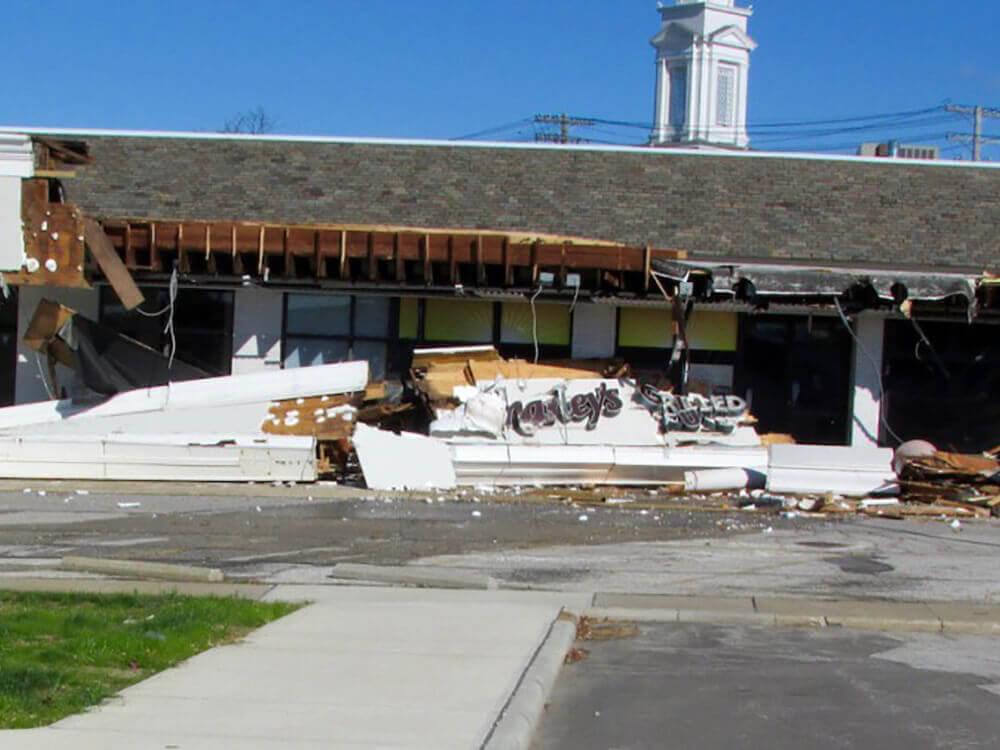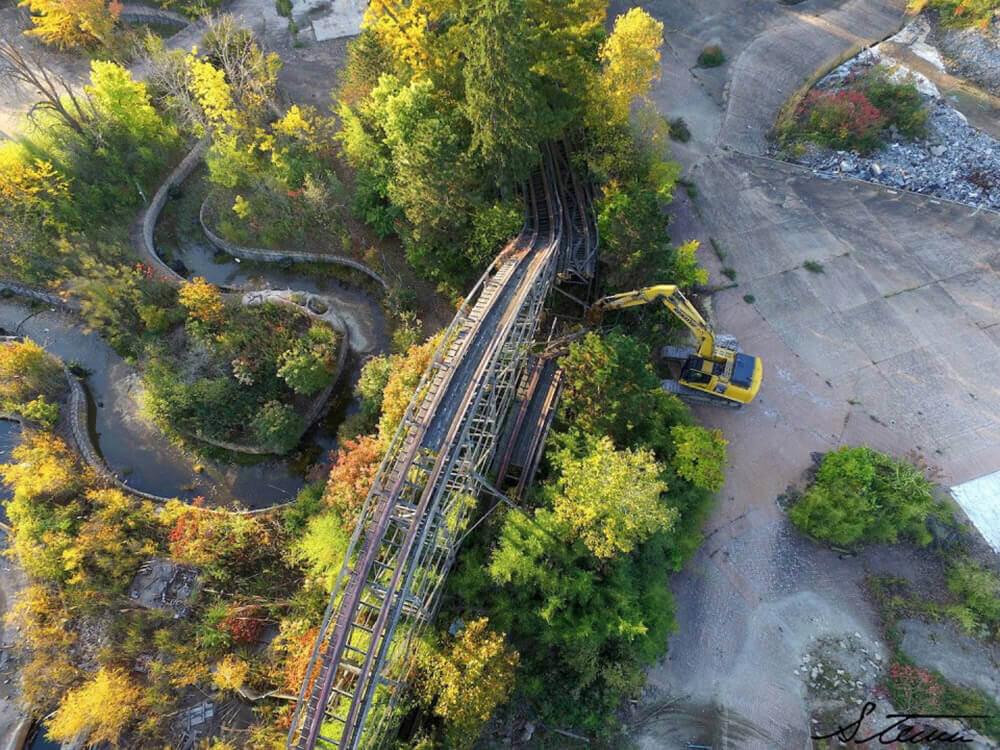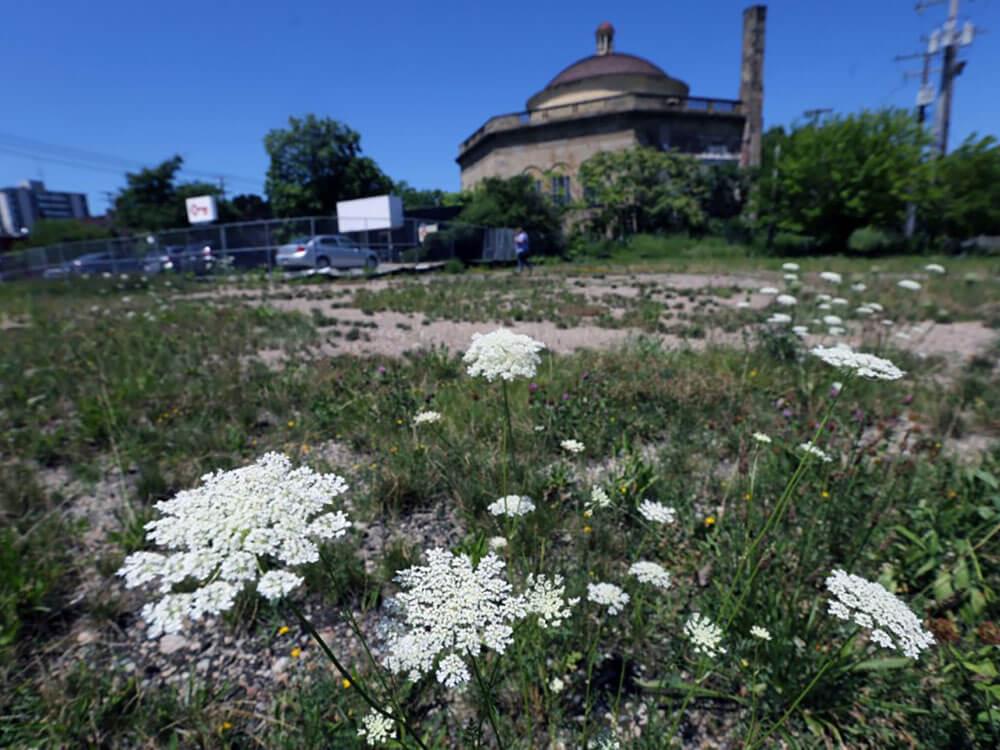CLEVELAND, Ohio - A demolition crew will start tearing down the Fifth Church of Christ Scientist on Cleveland’s West Side next week, starting the six-to eight-week process of wiping a 90-year-old city landmark off the map.
C&J Contractors of Cleveland is preparing to raze the well-known building, which has been vacant for a quarter of a century. Very little of the structure was saved for other uses, due to the building’s deterioration, the high cost of deconstruction and the city’s tight budget for the job.
In a Tuesday evening email to a small group of Edgewater neighborhood stakeholders, a city official outlined the demolition timeline and wrote that the church’s footprint will be filled and prepared for new development that could start next year. Plans for the broader block, along West 117th Street between Clifton Boulevard and Lake Avenue, include a Lucky’s Market grocery store and other retail to the south and high-end townhouses to the north.
Initial designs floated by residential developer Andrew Brickman showed the church’s portico - its main entry arch - as a freestanding gateway to the townhouses at the Cleveland-Lakewood border. That dramatic preservation concept was shelved, though, once it became clear that separating the entrance from the church and reconstructing it would cost anywhere from $875,000 to $2 million, and possibly more.
The city, which owns the church, had just over $260,000 to work with.
More recently, the city and Councilman Matt Zone talked about removing the gazebo-like cupola from the building’s roof and placing it in a green space planned at the northwest corner of the site. After several weeks of waiting for the Cleveland Electric Illuminating Co. to cut power lines near the church, making it safe to send workers up in a basket on a crane, preservation consultant WR Restoration got close to the cupola in August.
The findings weren’t good. The underlying steel looked like Swiss cheese. Chunks of the stone capitals were falling off. The cupola’s dome turned out to be rotted wood, not metal. The architectural feature looked solid from the ground but, from the air, it was a mess.
We got highly concerned about it collapsing and pulling us with it,
Jim Wamelink of WR Restoration said of the cupola.
It would have been a safety concern. When you’re up there, 100-some-odd feet, the wind is swinging the basket. And there’s nothing to grab onto to keep the basket from moving. … It just became a huge safety concern for us, number one. And, number two, as we started taking it apart, it started to fall apart.
The only salvageable bits were the roof tiles. The city is storing those tiles, along with larger tiles removed from the church’s main dome and a few other pieces of the church: the date stone and architect’s stone, some decorative scrolls, a few columns and a time capsule.
Some of the large roof tiles will be used in a wall between the Shoppes on Clifton development and the townhouses. The city is hammering out an agreement with Cudell Improvement, Inc., a neighborhood nonprofit, to make the remaining large tiles available to nearby residents.
The cupola will come down with the rest of the building. It won’t be reconstructed. But it might be recreated.
The Jackson administration and Councilman Matt Zone are confident that a replica cupola can be built from existing documentation and can incorporate the salvaged roof tiles,
Charles Slife, special assistant for regional development at City Hall, wrote in the Tuesday email to neighbors and business owners who have participated in years of discussions about the church.
The city and Zone also are planning an event, possibly in October, to crack open the time capsule and celebrate a ceremonial groundbreaking for the next wave of development on the block.



